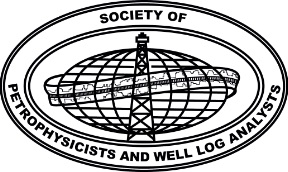SPWLA release. Petrophysics vol. 59

The Society of Petrophysicists and Well Log Analysts (SPWLA) is a nonprofit corporation dedicated to the advancement of the science of petrophysics and formation evaluation, through well logging and other formation evaluation techniques and to the application of these techniques to the exploitation of gas, oil and other minerals. Founded in 1959, SPWLA provides information services to scientists in the petroleum and mineral industries, serves as a voice of shared interests in our profession, plays a major role in strengthening petrophysical education, and strives to increase the awareness of the role petrophysics has in the Oil and Gas Industry and the scientific community.
Efficiency Improvements in Production Profiling Using Ultracompact Flow Array Sensing Technology
The authors : Linda Abbassi, Emmanuel Tavernier, Eric Donzier, Alain Gysen, Michel Gysen, Chee Kong Chen, Ashraf Zeid, and Gerardo Cedillo
Production logging in deviated wells has shown so far limited success in providing a reliable and cost-efficient method for production profiling. The reasons are numerous, but two factors are mainly responsible: conventional array production logging tools constitute very long toolstrings associated with expensive deployments, and data analysis is complex, requiring time-consuming analysis from cased-hole production logging experts. Overall, despite heavy investments made to perform downhole measurements, results are often disappointing and interpretation affected by a great deal of uncertainty.
A new instrumentation technology using microelectro-mechanical systems (MEMS) as well as new interpretation methods is offering new perspectives to this domain. In this paper, we describe a short and modular multiphase flow-sensor platform capable of achieving up to 10 times reduction in toolstring length compared to existing technology. Miniature pressure, temperature, optical, electrical, acoustic, microspinners, and ultrasonic Doppler sensors can be mounted independently from each other and easily interchanged to adapt the tool to address the well-specific challenges and meet the objectives of the surveillance program. By using both the sensor multiplicity made possible by hardware miniaturization, and diversity from multiple measurements, resolution and robustness is greatly improved. In addition, the use of digital power integrated into each individual sensor (smart sensor) provides calibrated data output, which highly facilitates the interpretation.
The new technology is an ultracompact array platform, with new sensors designs, whose superior measurements are enhanced by the new interpretation methods it enables.
;)
